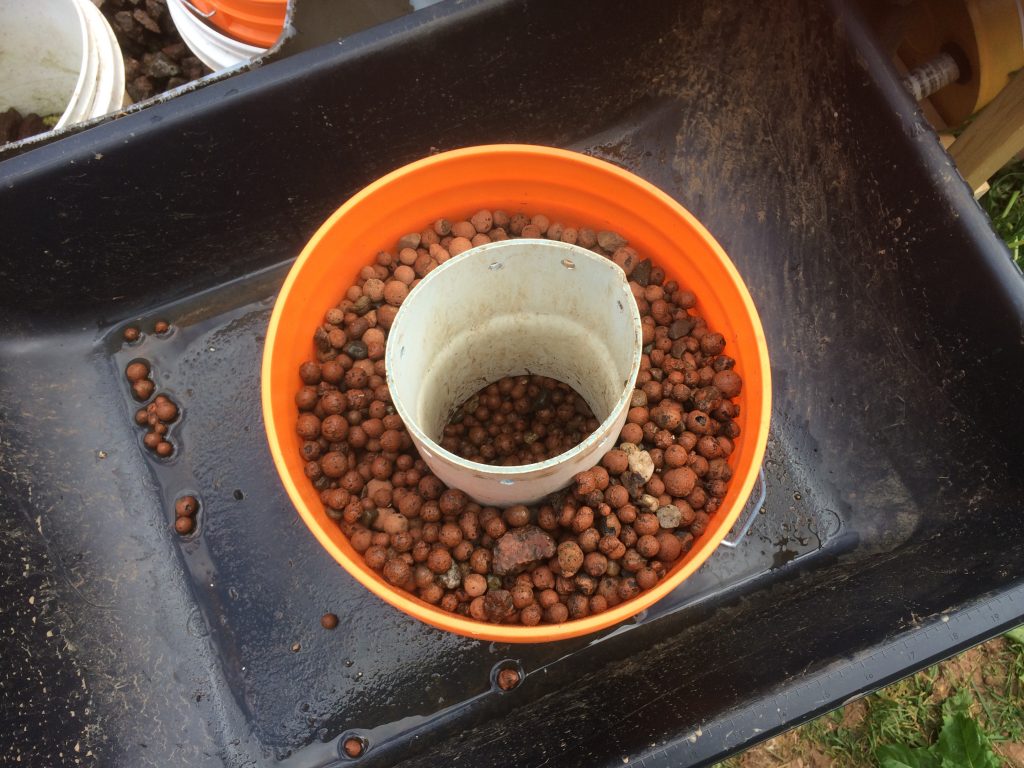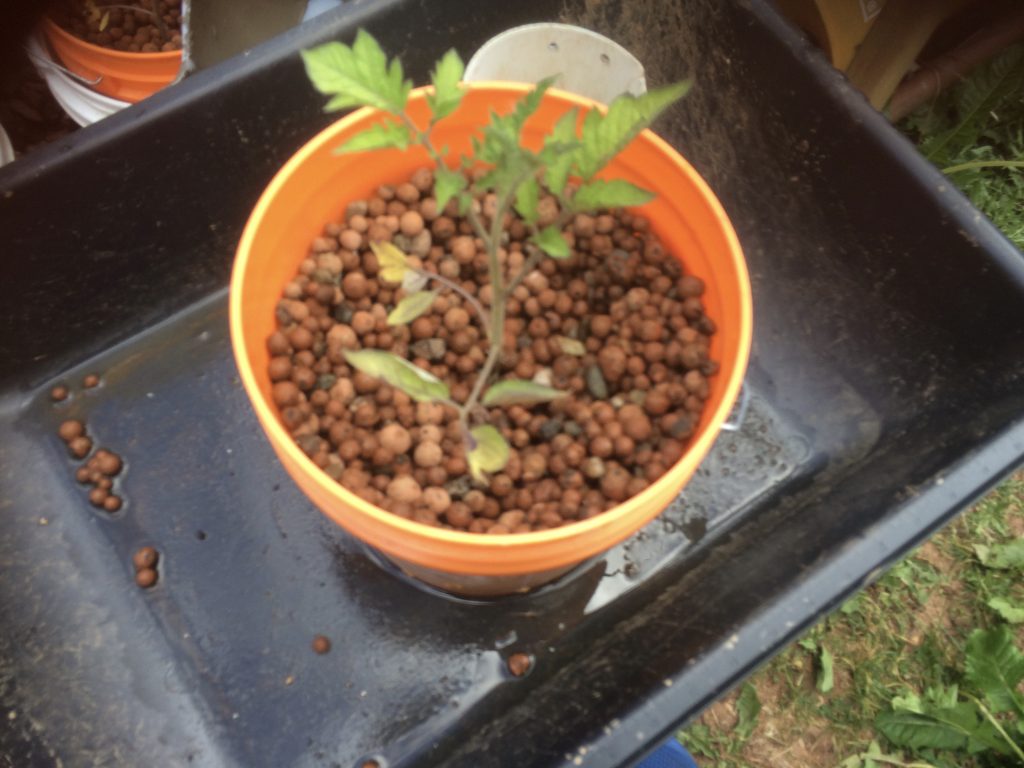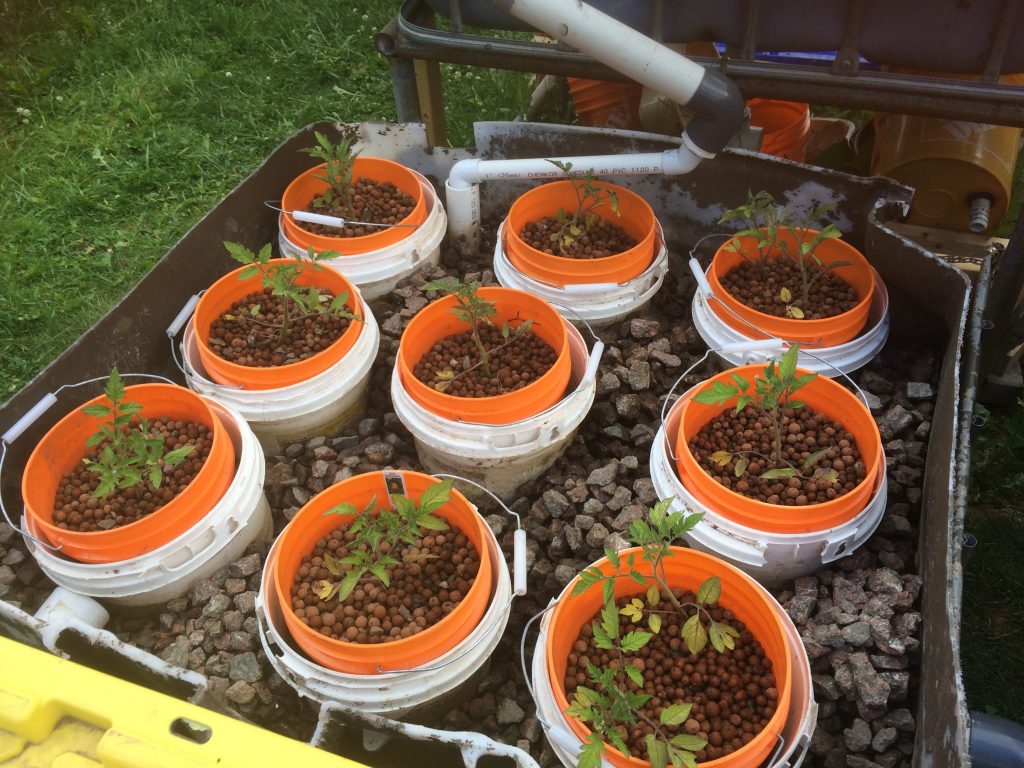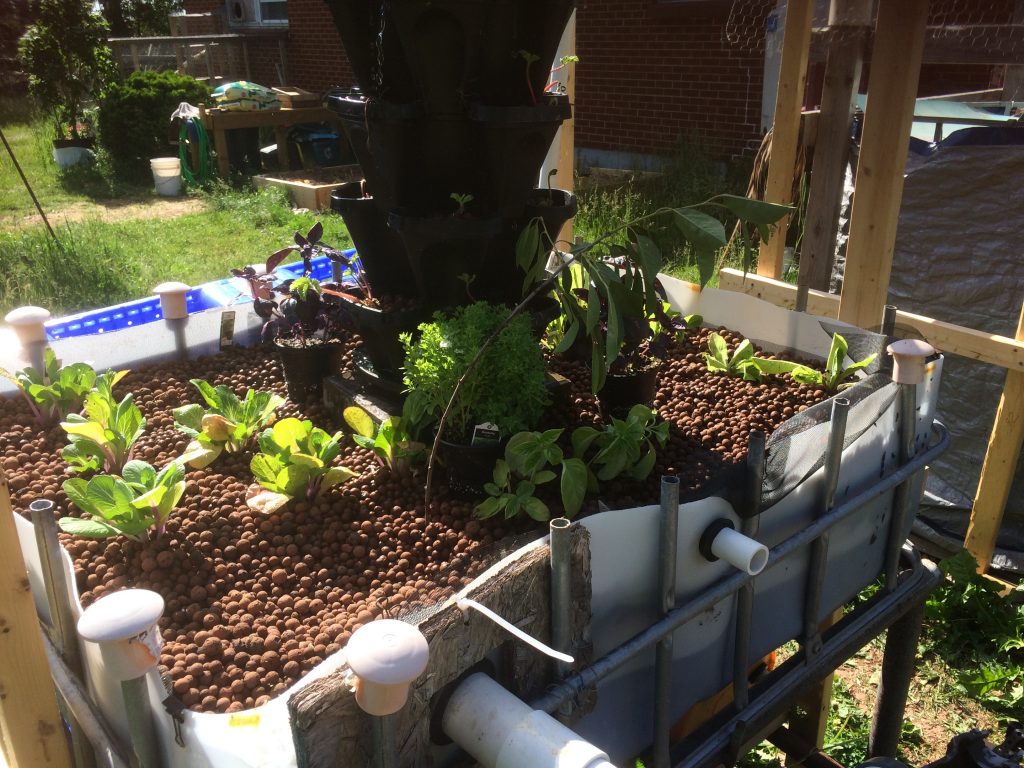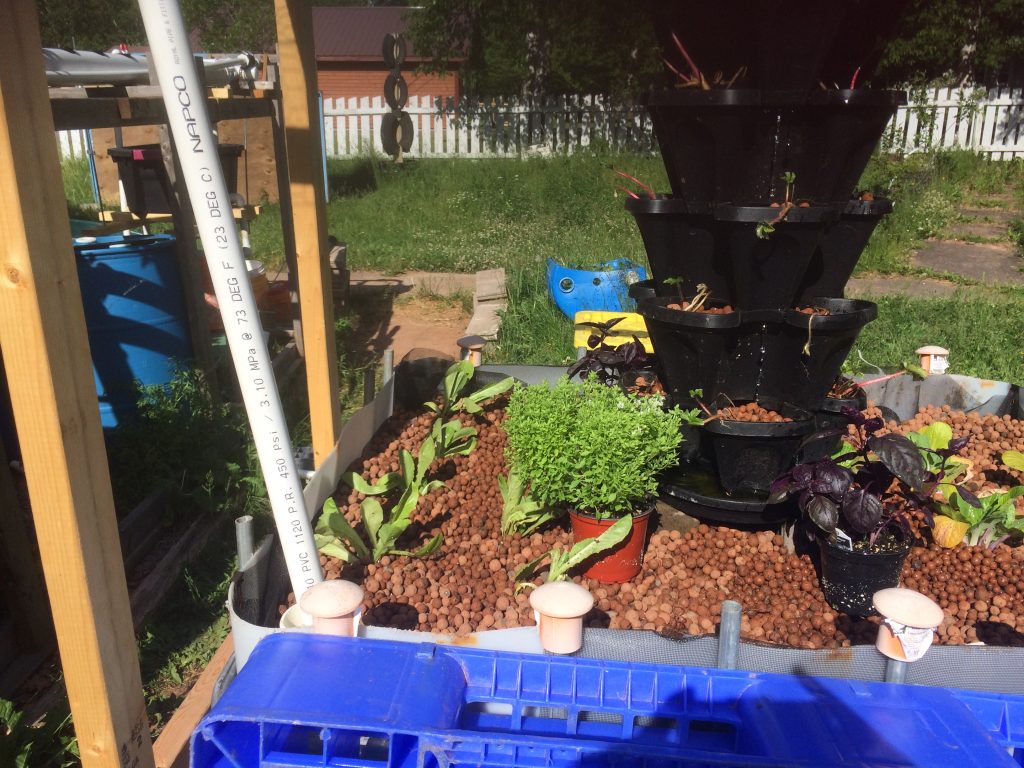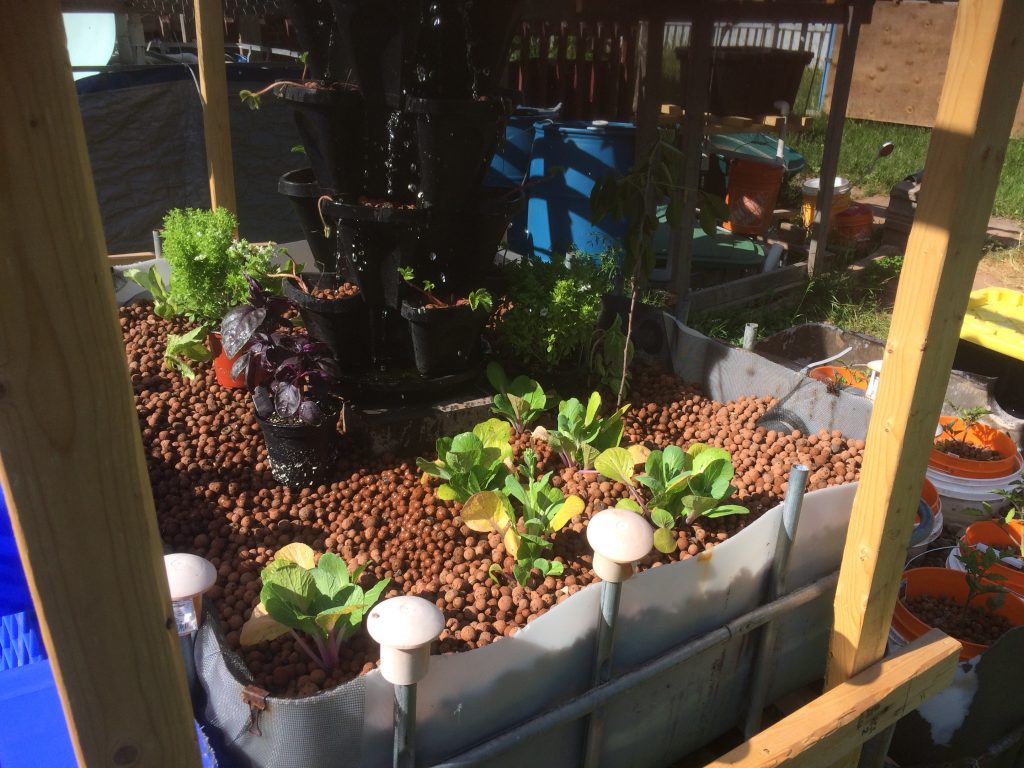In spite of the heat-wave we’re currently suffering through here in Morell, Prince Edward Island, I was out yesterday doing some planting on the aquaponics system. I needed to get the Dutch-Bucket-in-Bucket system finished up to clear the way in the Media Grow-bed for other new plants.
The concern, based on prior experience, is that tomatoes do a lot of root-production before they start showing substantial growth above ground. So while it looked like not much had changed since I put the plants into the media bed, I suspected that wasn’t the case.
Sure enough, when I tried lifting the first tomato plant, the roots had expanded sufficiently that I couldn’t actually just pick it up. I had to under-cut the plant and then lift it out, and then carefully break up the fist-sized ball of clay pellets that came with it.
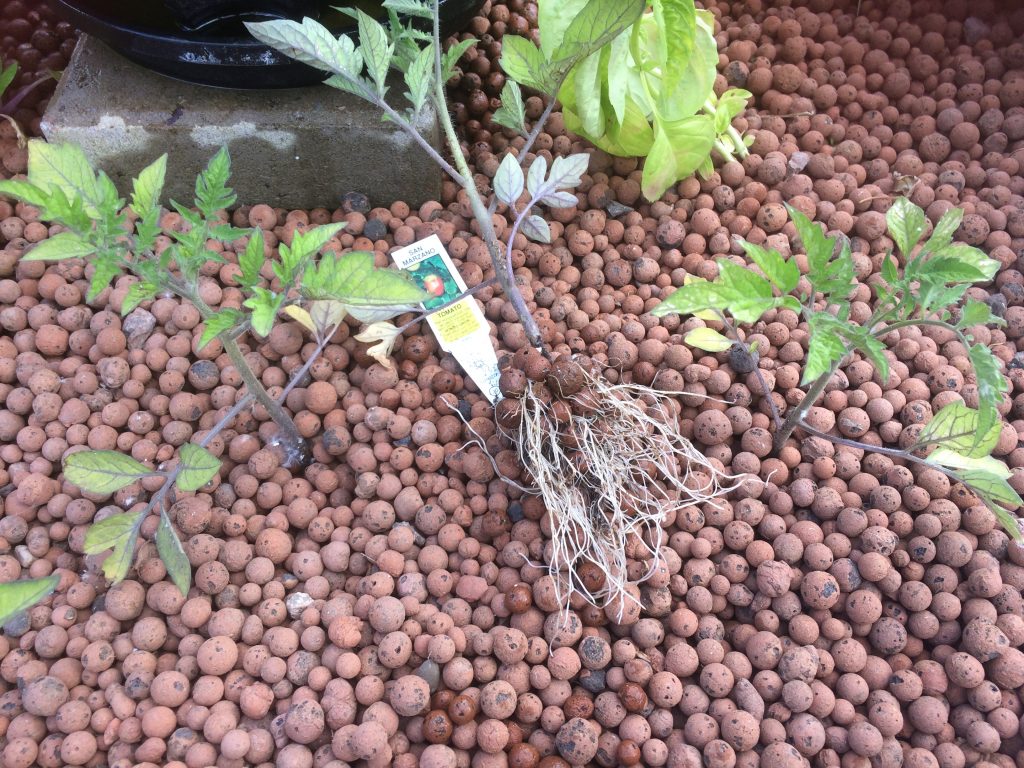
After that, I set up a small work bench near by with a cement mixing tray on it. The tray was to catch water and stray escaping hydroton. I pulled one of the buckets out of the Dutch-Bucket-in-Bucket set and brought it over.
I then took a 150mm long off-cut of 100mm pipe and pushed it down into the clay pellets in the bucket. Subsequently, I scooped out the pellets down to the bottom of the pipe, leaving me a good working hole to plant in. I dropped the tomato plant in, held the stem so that the plant would’t move and pulled the pipe up and away.
The surrounding clay pellets fell into the open gap, and neatly covered up the plant roots. Shout out to Rob Bob in Australia for the brilliant idea with the pipe off-cut; that makes things so much easier. Much appreciated tip!
I then gave the pot a couple of light shakes to settle all the pellets, and then fussed with the plant to get it mostly straight. After that was done, I returned the bucket back to the DBiB bed. Rinse and repeat eight more times.
With that done, I had a lot of empty space in the conventional media grow-bed. Continuing to use the off-cut pipe (aka: Super Clever Aussie Planting Tool) I moved the basil from the west side of the grow-bed to the east, then the Pak-Choi from the north side to the south.
Next, some Romaine lettuce went in on the north side of the grow-bed. That leaves two pots of two different types of basil that needs to be planted, but by this point the heat / humidex was up over 37c, and I called it done for the day.
The plan is to transplant the remaining basil into the east side of the grow bed. This will leave the west side available to plant seeds for carrots and beets. I’m interested to see how well they grow.
The depth of clay pellets to the nylon screen over the gravel under-layer is about 10cm. For the beets, that’s no problem. The cultivar of carrots we’ve chosen produce short, thick tubers which are ideal for being sliced to “coins”.
I did a pH test on the system while I was working. The plants all look healthy, but I’m permanently suspicious of ammonia / nitrite issues because of the high alkalinity of the water.
The well-water here is chock-full of calcium-ferrate, and we haven’t had a substantial rain in over two weeks. The problem with calcium-ferrate is that it isn’t biologically available, but soaks acid like a monster. So, short of using rain water or pouring sulphuric acid into the settling tank, the pH stays elevated.
27 May // pH 8.0 // NH3 0.3 // NO2 0.3 // NO3 7ppm (½ cycled) 22 Jun // pH 8.0 // NH3 0.6 // NO2 0.0 // NO3 0.0ppm
So, the plants & plankton in the system are using up all the nutrients as fast as they’re being produced. The slight elevation on ammonia is because I did the test about an hour after feeding time; even with the elevated pH, it’s still a “safe” level.
The nasty heat wave continues, so the big issue is evaporation from the system and not getting myself a case of heat-stroke while trying to work outside. I’ll try and get the remaining four basil transplanted this evening once the sun is lower down in the sky.
Once that’s done, I’ve got seedlings to start in trays and rock-wool in the house. Then it’s mostly checking on the garden in the morning, feeding the fish twice a day, and relaxing until September.
The only thing I want to change is getting a pond-grade air pump for the system. My experiment with the Trompe pump was interesting, but the water flow is split enough that there isn’t enough air volume to run air stones. It does work, it’s just too low volume.
Thus, to be a bit more useful with the Moving Bed Bio-Reactor, I need to replace my defective air pump. I’ll likely order that on my next pay-day, and post a video update once it’s doing it’s work.
Thanks very much for reading along. As always, I’d love to hear your comments or get links to your own backyard aquaponic system articles and images. Good luck in your gardens, have fun with what you’re doing, and all the best. Until next time!
